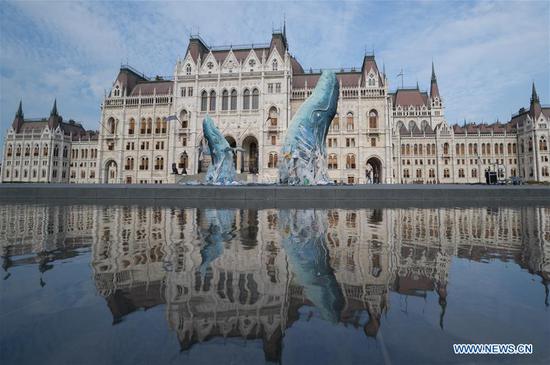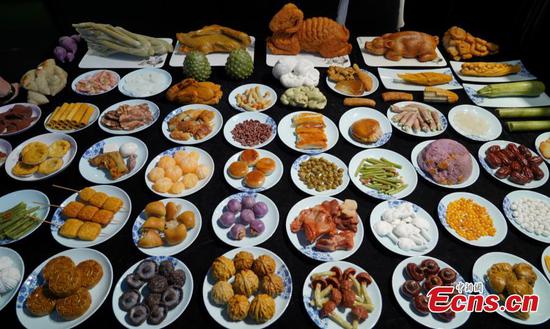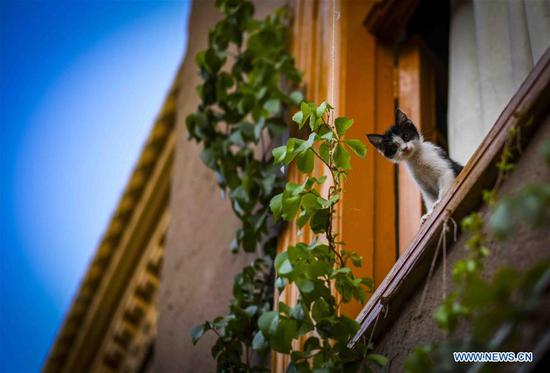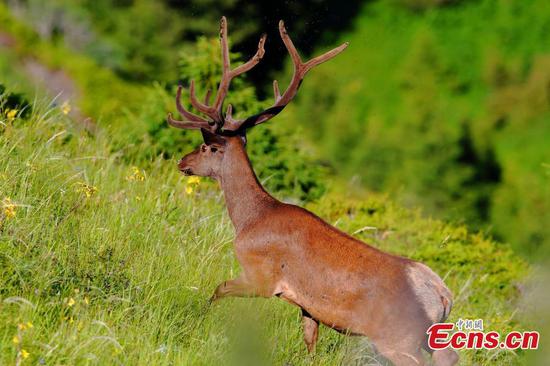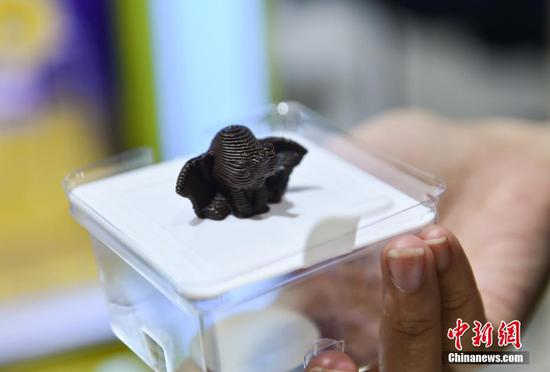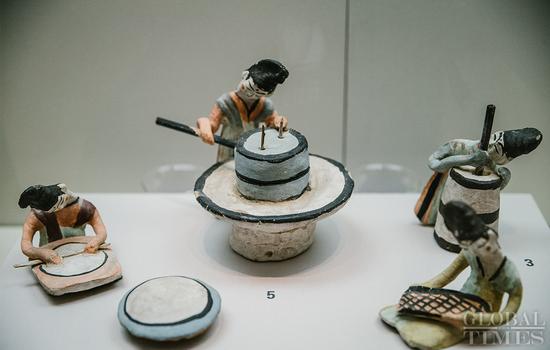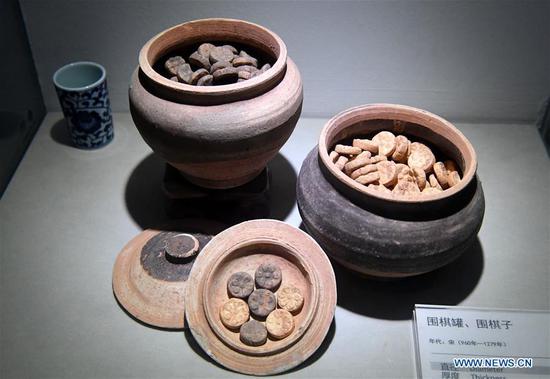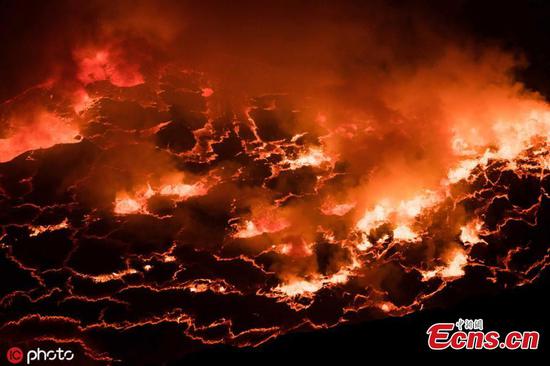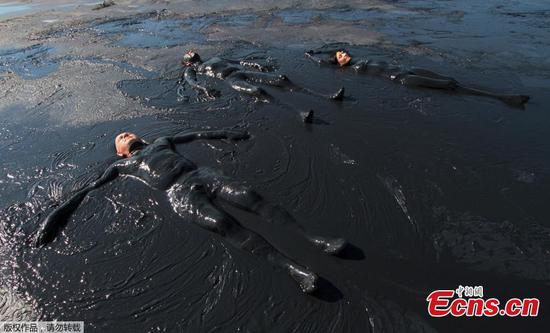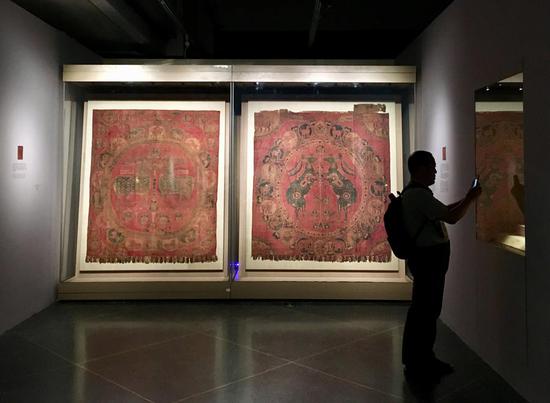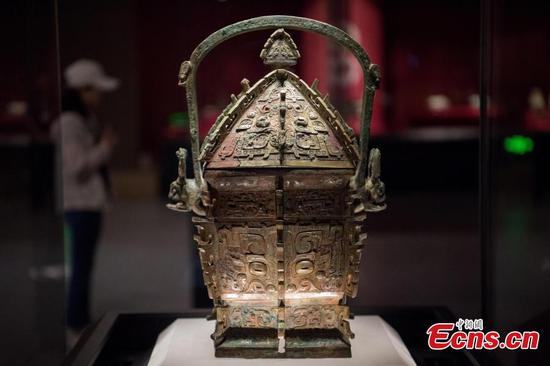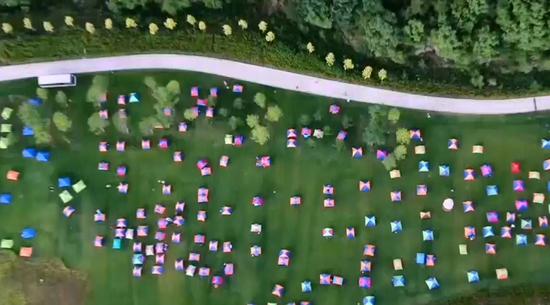
A cuckoo chick is treated at the center. (ZHU XINGXIN/CHINA DAILY)
Urbanization
Despite the positive moves, the rapid progress of urbanization has seen suitable wild animal habitats shrink in large cities.
Liu, the professor, recalled that his middle school in Beijing's Haidian district was surrounded by paddy fields containing plants that provided habitats for birds and insects, and deer appeared occasionally.
In recent years, though, he has noticed a decline in food sources for wild birds, while the expansion of high-rise buildings and concrete yards has led to a lack of the soil many birds use to build nests.
"For example, many birds will not build nests in certain areas if they can't find food and territory, so they may not even come to the city anymore," he said, adding that the development of artificial lawns and greenery has also affected the lives of wild birds.
"We trim lawns and spray pesticides frequently to keep the city landscape in good condition, but we forget that wild animals may be affected."
Shi said that his wildlife rescue center treats a range of injured animals every season. In spring and autumn, migratory birds are the main focus of attention.
In early May, Eurasian woodcocks were frequently seen above Beijing. When flying to Northeast China to breed, they pass through the downtown and are easily distracted by the images of blue skies and white clouds reflected by the glass walls of high-rise buildings.
"They are likely to hit the glass curtain wall. If a bird is just knocked unconscious, we let it rest for a while. But these birds fly at high speed, so many die as a result of collisions," Shi said.
Some species, such as swallows, magpies and common kestrels, like to nest in the spaces between air conditioners and walls, and chicks sometimes fall from high nests and starve to death as a result.
Height is not the only problem, though. "If people don't notice the nests under air-conditioner ventilation pipes in time, the chicks may roast to death as a result of the high temperatures the machines produce," Shi said.
Moreover, the city is full of predators, especially cats, which hunt birds, insects and small mammals.
A 2013 study by the Smithsonian Conservation Biology Institute in the US showed that cats, either feral or pets, kill 1.4 billion to 3.7 billion birds in the US every year.
The study added that felines also kill about 20.7 billion mammals in the US annually.
Future plans
In a bid to promote protection, Zhang Yu, the hedgehog enthusiast, has plans to publish a book of the wild animals he has photographed in Beijing.
"Not only hedgehogs, but all the wild creatures I have watched in the city make me feel that I am not living in a metropolis but a wild field," he said. "I like to make friends with them, even those in my community yard, and it makes me happy every time I see those cute creatures."









